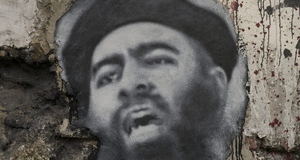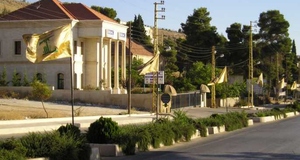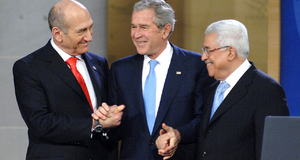Featured Article:The Political Rationality of Terror: Understanding Terrorism as the Result of Organizational Goal-Seeking
By
2016, Vol. 8 No. 11 | pg. 1/2 | »
IN THIS ARTICLE
In the early 1990s, two terrorist organizations, Hamas and the Fatah-led Palestinian Liberation Organization (PLO), were using terrorism to promote their political plight of Palestinian self-determination. Although both organizations vowed to use armed struggles to promote the Palestinian plight, Fatah chose to desert violence in favor of legitimate political channels. In the beginning, terrorism proved to be effective for both groups in mobilizing popular support, legitimizing their cause, and raising capital. After years of armed tactics that proved fruitful, Yassir Arafat, Fatah’s leader, dramatically changed his organization’s tactics. After 1995, Fatah did not launch a single campaign against Israel. Given that, what makes terrorist organizations choose to change their tactics from terrorism to diplomacy? This paper argues that public opinion and political participation best explain why the PLO decided to stop using terrorism while Hamas increased its terrorist activities. Terrorism has a pull and push relationship with public opinion. Terrorist activities serve to attract support, but only so long as the public supports terrorism as a tactic. Both Hamas and Fatah capitalized on public support for an armed struggle against Israel to raise their banners. However, terrorism has very limited effectiveness in achieving political gains. While both organizations raised their profile due to their use of terrorism, Arafat had the opportunity to achieve Fatah’s political goal of negotiations with the US and Israel on the topic of establishing a Palestinian state. It was Arafat’s constituents’ support for the peace process that made him renounce terrorism. Similarly, not presented with the same opportunity as Arafat, coupled with having constituents that supported violence, Hamas continued its terrorist activities. Understanding the importance of popular support for violence has significant implications for policy makers considering negotiations with terrorist organizations. Lack of popular support for diplomacy would explain why such attempts are doomed to fail. Further, this paper shows why contemporary counterterrorism efforts are inadequate. Scholars that argue that counterterrorism stops terrorism fail to recognize that once counterterrorism stops, terrorism continues. Scholarship that argues that terrorism stops due to concessions fails to recognize that concessions only prove that terrorism is useful. Moreover, this paper uses a two-level analysis of terrorist organizations’ strategies developed by Peter Krause, an assistant professor of Political Science from Boston College. In using Krause’s analysis, this paper addresses the effectiveness of terrorism for the organization in ways that conventional wisdom fails to recognize. Joining Krause, this paper calls for a new approach in assessing terrorism and terrorist organizations.Terrorist organizations choose to stop using terrorism when a legitimate political channel becomes available and is supported by the organization’s constituencies. I argue that terrorist organizations choose to stop using terrorism when a legitimate political channel becomes available and is supported by the organization’s constituencies. I start by deconstructing my theory, explaining how terrorism serves different agendas for different purposes, organizational and strategic. I show how terrorism affects the organization’s popularity, and how the organization’s popular support dictates its use of terrorism. I then continue in explaining my approach to assessing my theory, the comparative method. I then compare Hamas and Fatah and measure the accuracy of my theory. The comparison shows that decisions of the leaderships of Fatah and Hamas as to when and how to exercise terrorism were directly linked to opportunities for other methods to advance their political agendas and the support of the public for such endeavors. The paper closes by addressing the implications both for policymakers and for future scholarship.
A terrorist organization will stop using terrorism when it loses its effectiveness in promoting the organization’s goals. Specifically, this change is most likely to occur when popular support for the tactic decreases and legitimate political participation broadens. An argument about the conditions that determine the ineffectiveness of terrorism in promoting organizational goals needs to be preceded by an understanding of a group’s goals and why it uses terrorism in the first place. Peter Krause notes that a terrorist organization, similar to any political movement, operates on a two-level framework of objectives: organizational and strategic.1 The organizational goals of a group consist of objectives that would increase the strength and security of the group in hopes of promoting the group’s strategic objectives. This may include management or leadership, an agenda or manifesto listing objectives, capital, publicity, and since the group has political aspirations, a following. Organizational objectives also include decreasing the strength of rival groups.2 Thus, organizational goals relate to the list of things that would make an organization grow and operate better. Strategic goals, on the other hand, refer to the organization’s manifesto or mission statement. They entail the group’s political agenda. This usually refers to “ending military occupation, altering the nature of the ruling government, or changing discriminatory policies.”3 Hence, strategic goals are what the organization seeks to achieve, or the reason for which it was established. Because organizations operate on two levels of objectives, terrorism’s efficacy in achieving such objectives needs to be measured separately. While the efficacy of terrorism in promoting strategic goals is highly debatable in academia and has yet to be agreed upon, it is easy to see how it fails to promote ambitious and abstract strategic objectives. Terrorism is a tactic used when there is no other choice and because the group has a comparative advantage in using it.4 Especially in its early stages, an organization is too small and weak to effectively address its grievances with its incumbent. Terrorism is thus used because it is the most effective weapon such groups have.5 Armed with highly determined followings, organizations use terrorism because it is “cheap to execute yet expensive to prevent.”6 Still, especially for groups with an ambitious agenda such as the dissolution of a country, terrorism is seldom effective in achieving strategic goals. Pape’s argument that terrorism is effective in achieving strategic goals is based on concessions that Israel made in response to specific terrorist campaigns.7 However, these concessions were severely minor when compared with Hamas’s broader agenda expressed in its charter, calling for the liberation of every inch of Palestine.8 So while Pape focuses on short-term and immediate strategic achievements of terrorism, scholars agree that terrorism is ineffectual in achieving any long-term goals.9 Still, these small concessions, accompanied by popular romanticized belief that additional concessions would follow, further legitimize the organization’s use of violence. More significantly, effective or not, the use of violence stems from the understanding that it is the only weapon the organization has against its foe. Since I argue that terrorism is ineffective in promoting a group’s strategic objectives, for the rest of my analysis I will focus on the relationship between the use of terrorism and the advancements of organizational objectives. For organizational purposes, terrorism can be effective in broadcasting groups’ messages and rallying support, popular and material. In its early stages, an organization has difficulties in expressing its grievances, as it has no access to political participation. In using terrorism, a group seeks to broadcast its message to as broad an audience as possible, to show its determination to fight for its cause, to rally popular support, gather material support, and recruit a following. Terrorism brings international attention and legitimacy to the group and its agenda, which facilitates foreign monetary support.10 Moreover, it is an expression of determination for the cause.11 As for rival groups, “The use of violence can help mobilize support for the organization from the base and allow it to outbid other armed groups in the movement for leadership. Additionally, an armed group can strike rival organizations directly to weaken them and improve its own position in the movement hierarchy.”12 Hence, for an organization, especially in its early stages, terrorism is essential in harvesting popular support in the forms of capital, arms, recruits, territory, political backing, and weakening of rivalry, which are all crucial for a group’s sustainability. Terrorism stops promoting organizational objectives when it is not backed by popular support. When constituencies prefer other modes of operation, terrorism becomes harmful for the support of the group. Once the organization’s constituency is no longer willing to sacrifice lives for the cause, or is changing its preferences regarding the use of violence, the group loses its comparative advantage in terrorism. Piazza, for example, demonstrates the importance of target selection as when a group launches campaigns that harm civilians to whom their constituencies can relate, popular support for terrorism decreases.13 Terrorism then becomes counterproductive to the group’s organizational objectives, decreasing popular support. Since a group’s survival depends on its following’s approval, a decrease in popular support means losses in political capital. In such instances, the group would change its strategy to facilitate its constituencies’ approval. A decrease in support for violence is often facilitated by access to legitimate political participation, which can promote the group’s strategic objectives. When real opportunities for promoting a group’s political objectives become available, if the group’s constituencies support such endeavors, the group will forsake terrorism. Though she does not account for popular support, Crenshaw shows that in instances in which alternative modi operandi become available and more effective in achieving a group’s objectives, the group will change its strategy from terrorism to pursue these legitimate paths.14 Similarly, Cronin and Crenshaw recognize the feasibility of a transition from terrorism into legitimate political channels when negotiations become available and more attractive.15 Indeed, as groups grow and increase their strength and influence, they increase their bargaining power, and thus new modi operandi become available due to new military capabilities, new diplomatic capabilities, or the willingness of other sides to negotiate or make concessions due to damages inflicted. Due to its effectiveness for organizational purposes, terrorism facilitates access to more opportunities for achieving the group’s strategic goals as it makes the organization bigger and more influential. When constituencies believe that the pursuit of legitimate political paths would promote their strategic agenda better than violence, the group would adhere to their demands and stop using terrorism.16 A small group with grievances and ambitious political aspirations has little access to political participation. Terrorism is often the best tool they have to promote their political agenda. While it fails in achieving the group’s ambitious aspirations, terrorism draws attention and support and expands a group’s constituencies, and so it helps transform the group into a competent political actor with which other actors communicate. Thus, terrorism brings more options for a group to negotiate grievances with others. Groups use terrorism to facilitate their growth by attracting support, both material and popular. They continue using terrorism to counter competition with other groups, while seeking further growth. With growth, terrorism can facilitate political participation as it expends a group’s bargaining power. As a group’s bargaining power increases, new political possibilities can develop. When popular support for terrorism subsides due to belief that newly accessible political channels could better advance strategic objectives, organizations would stop using terrorism as it becomes poisonous to the groups’ sustainability. Groups would stop using terrorism when using it means losing support. Methods & Case SelectionIn assessing this hypothesis, I examine Fatah and Hamas and their violent activities from their establishment and until 2013. In comparing both cases, I demonstrate the importance of popular opinion in shaping these groups’ strategies. In assessing the groups’ similarities and differences, I validate my theory as an overarching one in political science. Fatah and Hamas epitomize the stereotypical terrorist organization that used ideas of “violence as only choice” to mobilize support and advance organizational goals. Both Hamas and Fatah came about as movements expressing Palestinian grievances, in pursuit of Palestinian liberation. Moreover, both operate from the Occupied Territories. These groups used terrorism against Israel, the US, and against each other. They both have had the international community, and especially Arab countries, influence their existence and strategy. Hamas and Fatah resemble one another in their histories, but after the first intifada they differ in their strategies. While Fatah adhered to diplomacy, Hamas persisted in armed struggles. Analyzing the correlations between popular support, organizational objectives, and the use of terrorism reveals how my theory can explain this divergence in strategies and why one group stopped using terrorism while the other did not. Organizationally, Fatah and Hamas typify the classic and generic process of other terrorist organizations and their use of terrorism to advance their goals. As a result, Hamas and Fatah demonstrate the extent to which my theory can be implemented in other cases. Though both Fatah and Hamas are Palestinian, they exemplify the decision-making processes of any terrorist organization, and even any political movement vis-à-vis the facilitation of mobilizing popular support for advancing the group’s organizational goals in order to advance strategic goals. The analyses are based on scholarship discussing strategic processes of terrorist organizations, along with political literature surveying each organization. I use scholarship about terrorist organization strategy to explain failures of conventional wisdoms to explain the links between the use of terrorism and political goal achievement. I exhibit Palestinian public opinion using polls and surveys taken between 1990-2007. I then correlate public polling found in scholars’ work with incidences of terrorism, as found in terrorism databases from RAND and the Global Terrorism Database (GTD), to examine the relationship between popular support and the execution of terrorist campaigns. FatahFatah was formed in 1959 as a Palestinian liberation movement. Its early days showed very little achievements due to lack of knowledge about the group. Through the 1970s and 1980s, Fatah’s leadership facilitated the growth of the organization through armed struggle. They knew that violence will not achieve their strategic objectives, but it would facilitate their plight, bringing them closer to the negotiation table. In the 1970s, they used violence to combat rival groups, and they capitalized on public support for violence to become a leading political movement among Palestinians. Persistently seeking political participation, the Fatah-led PLO harnessed the opportunity of negotiations with Israel in 1991. As public support for violence subsided due to faith in the peace process, Fatah gradually halted their use of terrorism. Growth of FatahTerrorism helped facilitate Fatah’s organizational growth. In its early stages, the organization was weak, had very few resources, and no access to political participation because Palestinians relied on Arab nations to promote their plight. The group used armed struggle to unify followers and justify its cause. Fully aware that it would not be able to present a militaristic threat to Israel and that a political channel is the correct path to achieving concessions from Israel, Fatah chose violence for organizational purposes of mobilizing popular support. “Fatah’s founder argued that it was the only way to impress the Palestinian cause on the international agenda, and more important, the only way to rally the masses to the popular movement in formation.”17 In using violence, Fatah’s founders sought to mobilize internal and external support simultaneously, via the mobilization of Palestinians and the international community, respectively. Furthermore, Fatah recognized that violence would be the only means at its disposal for achieving its organizational goals of mobilization. Fatah’s evolution into actual violence was a process. The organization’s initial strategies were the adoption of an ambitious strategic goal of Palestinian nationalism as to reach a broad audience of followers, the adoption of a strategy of armed struggle to legitimize the organization, and clandestine operations as to not risk the organization’s survival. As such, Fatah started out underground. Its members tried to promote their political agenda via publications of their ideological platform in the underground publication Filastinuna.18 Fatah did not engage in actual violence until it served a very specific organizational purpose. The PLO, at that stage was mostly led and influenced by Arab nations, and Fatah sought organizational independence.19 As such, the PLO stood as a rival organization, and the use of violence by Fatah was about fighting over constituencies. Fatah started participating in violent attacks secretly via its military arm al-Asifa (the storm) because its members did not want to risk their exposure.20 At that point, Fatah did not claim responsibility for its attacks. Its members avoided responsibility because the attacks were not meant to promote Fatah’s strategy in regards to Israel, but its organizational goals of decreasing PLO’s influence. In 1969, Fatah took over the PLO and established its dominance as the dominant Palestinian liberation movement. The PLO engaged in violence to advance organizational goals. In 1970, Fatah faced competition within the PLO from a rival Palestinian movement, Popular Front for Liberation of Palestine (PFLP).21 PFLP had embarked on international terrorism missions that had raised their profile and inflated their constituencies. To increase its profile and rally more supporters, Fatah established the Black September group that was responsible for the assassination of eleven Israeli athletes at the Munich Olympic games in 1972.22 Situated in Lebanon, Fatah, much stronger than before, focused its attacks on Israel and nearly abandoned international targets.23 After a 1982 IDF operation in southern Lebanon, the PLO leadership moved to Tunis, but continued to engage in violence sent from Gaza and the West Bank.24 Because the PLO leadership was operating in Tunis, it was integral to actively mobilize supporters from the occupied territories as to deter competition. Thus, Fatah was committed to the use of violent campaigns vis-à-vis the occupied territories to raise international attention and to maintain regional political supremacy.25 Organizational vs. Strategic GoalsAware that violence advances its organizational goals, but not strategic, Fatah/PLO was open and willing to negotiate with Israel. From an institutional pragmatist standpoint, with the background of possible agreements between Israel and Arab states, Fatah realized an interim strategic amendment might be necessary for the organization.26 Still seeking the support of Arab nations, Fatah incorporated some non-violent means in its modus operandi to facilitate flexibility to changing regional dynamics mostly because those were endorsed by Arab nations.27 Arafat was operating between two oppositional streams, trying to appease both support for violence and support for diplomacy.28 Violent rhetoric mobilized his constituencies and advanced his organizational goals, while non-violent means mobilized international support for a political settlement, which advanced his strategic goals. This notion is evident in Arafat’s address to the UN General Assembly in 1974 in which “he stated that he came to the UN ‘bearing an olive branch and a freedom-fighter’s gun.’”29 As such, Fatah became much more careful in its violent endeavors, especially the ones operated internationally. Violence would be embarked upon so long as it was advancing Fatah’s institutional interests. Political ParticipationThe first Intifada (uprising) in 1987 was a turning point for Fatah/PLO. Strategically, it brought international attention to the Palestinian plight, which facilitated political processes and negotiations. Organizationally, internal and external actors influenced the PLO and Fatah in different ways, and it was difficult to formulate and execute a distinct strategy. The US intervened and presented Arafat with a list of demands as prerequisites to negotiations with Israel. Pressures from the territories grew intensely, urging Arafat to adhere to US demands.30 Kurtz notes, “By the end of the first year of the intifada, Fatah’s leadership in exile realized that its failure to put forward a plan for translating the struggle into a political triumph had undermined its normative status in the territories and its political standing internationally.”31 In 1988, in an address to the UN General Assembly, Arafat stated he would commit to peaceful means to facilitate an agreement with Israel and its neighboring Arab states.32 And in fact, between September 1987 and beginning of 1991 the PLO had almost no terrorist interactions.33 The first intifada intensified the splintering of views in the Palestinian community, which facilitated political upheavals. For constituents that supported political means, the intifada enabled negotiations with Israel, and the Oslo Accords. At first, the talks were secret, which accounts for the lack of violent political competition in the Territories.34 However, once the talks became public knowledge with the 1991 Madrid Conference, violence intensified again due to competition within the Territories. The PLO officially declared commitment to peaceful means. Fatah’s and the PLO’s organizational goals of mobilization rested upon negotiations. However, Fatah and the PLO lost the support of radical factions, which in turn turned to militant organizations like Hamas. These rival groups capitalized on Fatah’s commitment to peaceful means to raise their own profiles. I elaborate more on the specifics of Hamas in the next case study. Suffice it to say that these new dynamics in the Territories increased terrorist activities. While expressing commitment to peaceful means to serve its strategic goals, Fatah used violence between 1991 and 1995 to facilitate its organizational goals to diminish Hamas’s influence. Moreover, the uprising of the Palestinian populace as a bottom-up uprising demonstrated the Palestinian population’s commitment to violence. Thus, public opinion generally supported violence as a demonstration of Palestinian grievances. The PLO had to balance its use of violence according to its understanding of public opinion. A report for United Stated Institute of Peace (USIP) states, “the 1993 Oslo accords led to greater public willingness to oppose violence and support peace, negotiations, and reconciliation with Israel. Islamists lost much of their public support during this period.”35 However, Between September 1993 and January 1994 Palestinian support for the Oslo Accord dropped from 68.6 percent to 45.3.36 Similarly, terrorist activity of both Fatah/PLO and Hamas spiked at the turn of 1994, with more terrorist activity by Hamas.37 Still, mainstream constituencies of Fatah did not support the violence, and after 1995 the PLO, committed to the Oslo Accords, stopped the use of terrorism.38 The PLO would engage in terrorist activity once more in 2007 in response to tensions with Hamas, but I will elaborate on that more in the Hamas case study. After signing the Oslo Accords in 1993 and 1995, the PLO adhered to its agreement to forsake terrorism. Ostensibly, the PLO had achieved the best channel of achieving its strategic goals, legitimate political means. From its early stages as a weak, unknown movement, Fatah used terrorism to facilitate its organizational goals. Through terrorism, Fatah increased its bargaining power and thus got a seat at the negotiation table with Israel and the US. Most significantly, Fatah’s decisions on whether or not and when to use terrorism were made according to public opinion and popular support. The PLO stopped using terrorism once its constituents were convinced that the political processes offered to them would promote their political objectives better than terrorism.Continued on Next Page » Suggested Reading from Inquiries Journal
Inquiries Journal provides undergraduate and graduate students around the world a platform for the wide dissemination of academic work over a range of core disciplines. Representing the work of students from hundreds of institutions around the globe, Inquiries Journal's large database of academic articles is completely free. Learn more | Blog | Submit Latest in Political Science |


















